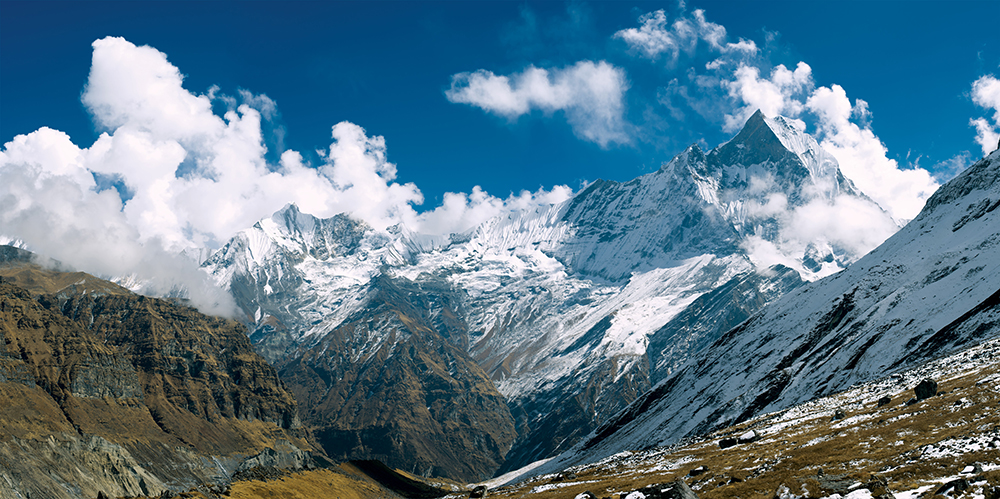Himalayan Growing Condition

The Himalayan region in Nepal is home to some of the world’s most pristine and breathtaking landscapes. The region is not only famous for its high-altitude trekking trails and mountain peaks, but also for its coffee cultivation. Nepal is a country that is quickly emerging as a significant coffee producer, with its high-quality Arabica beans gaining popularity among coffee lovers around the world. In this article, we will explore the unique Himalayan growing conditions for coffee in Nepal and how they contribute to the production of high-quality coffee beans.
The Himalayan region in Nepal is characterized by steep slopes, rugged terrain, and an average elevation of over 3000 meters above sea level. The region is home to some of the highest peaks in the world, including Mount Everest, which stands at a height of 8848 meters. The unique geography of the region creates an ideal environment for coffee cultivation. The slopes of the mountains provide ample sunlight and a well-drained soil, which is crucial for the growth of coffee plants.
The climate in the Himalayan region of Nepal is also ideal for coffee cultivation. The region experiences a subtropical climate with a monsoon season that lasts from June to September. During this period, the region receives heavy rainfall, which is essential for the growth of coffee plants. The temperature in the region ranges from 10°C to 30°C, which is ideal for the growth and maturation of coffee cherries.

One of the most significant factors that contribute to the unique growing conditions for coffee in Nepal is the high altitude of the region. Coffee plants in Nepal are grown at altitudes ranging from 1200 meters to 2000 meters above sea level. The high altitude provides several benefits for the growth of coffee plants.
Firstly, the high altitude creates a cool and stable climate, which is ideal for the growth of coffee plants. The cool temperatures slow down the maturation process of the coffee cherries, which allows them to develop a more complex flavor profile. Additionally, the high altitude provides a low-oxygen environment, which slows down the metabolism of the coffee plants. This results in a slower growth rate and a longer maturation period, which contributes to the development of high-quality coffee beans.
Soil Quality The soil in the Himalayan region of Nepal is another crucial factor that contributes to the unique growing conditions for coffee. The soil in the region is rich in organic matter, which provides the necessary nutrients for the growth of coffee plants. The well-drained soil also helps to prevent waterlogging, which can lead to root rot and other diseases.
In addition to this, the soil in the Himalayan region is also free from chemical fertilizers and pesticides. The coffee plants in Nepal are grown using organic farming methods, which promote soil health and sustainability. This results in coffee beans that are free from harmful chemicals and have a more natural flavor profile.
Traditional Growing Methods The traditional growing methods used in Nepal are another factor that contributes to the unique growing conditions for coffee in the region. The coffee plants in Nepal are grown using a shade-grown method, which involves growing coffee plants under the canopy of trees. This provides a more diverse and complex environment for the growth of coffee plants, which contributes to the development of high-quality coffee beans.
The shade-grown method also helps to conserve the natural biodiversity of the region. The trees provide habitat for birds, insects, and other wildlife, which helps to maintain the delicate ecological balance of the region. Additionally, the shade-grown method helps to reduce the risk of soil erosion and water pollution, which are significant environmental issues in many coffee-producing regions around the world.
Challenges in Coffee Production Despite the unique growing conditions for coffee in Nepal, the industry faces several challenges. One of the biggest challenges is the lack of infrastructure and technical expertise in the region. Many coffee farmers in Nepal are small-scale producers who lack access to modern equipment and technology, which can hinder the quality and quantity of coffee produced.

Another challenge faced by the coffee industry in Nepal is the lack of market access. Although Nepali coffee is gaining popularity among coffee lovers around the world, the industry still faces significant obstacles in terms of export and distribution. The lack of proper transportation and logistics infrastructure makes it difficult for coffee producers to reach international markets.
The Himalayan region in Nepal provides unique growing conditions for coffee, which contribute to the production of high-quality Arabica beans. The high altitude, well-drained soil, cool temperatures, and traditional growing methods create an ideal environment for coffee cultivation. However, the industry still faces significant challenges in terms of infrastructure, technical expertise, and market access. With the right support and investment, the Nepali coffee industry has the potential to become a significant player in the global coffee market, while also promoting sustainable farming practices and preserving the natural biodiversity of the region.



